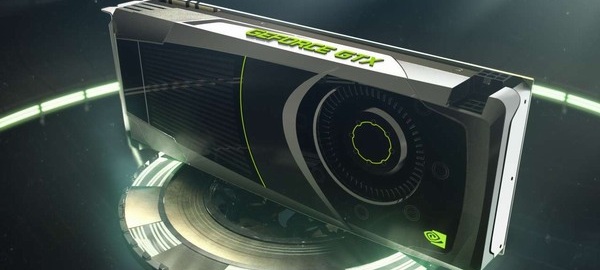And it’s finally here with us. Kepler, the next codenamed Nvidia card, has been launched and comes with some amazing features. The card supports up to 7 monitors, a new feature called GPU Boost that raises the clocks of the card for a limited time, Adaptive Vsync, FXAA, while on the other hand 3D Vision Surround gaming is now possible with only one GPU. Not only that, but GTX 680 is power efficient as it averages around 175W and comes with the best overall performance.
Techreport gave GTX680 their Editor choice, saying that the GeForce GTX 680 is slightly faster and 50 bucks less expensive than the Radeon HD 7970. In addition, Techreport has established that the GTX 680 is more power efficient and quiter than the Radeon HD 7970, so kudos to Nvidia for delivering on all those promises.
HardOCP shared the same opinion, concluded that the ‘GeForce GTX 680 truly is a win right out of the gate‘:
“It has been a long time since we’ve said that about a new GPU from NVIDIA, and it is about time the company got something right the first time! Perhaps the stigma of power hungry, hot, inefficient GPUs is gone thanks to the GeForce GTX 680? NVIDIA needed to build its “green” reputation back up with hardware enthusiasts and gamers, and the GeForce GTX 680 is an excellent start.”
Although GTX 680 is a beast, it can be vRAM limited. AnandTech tested Crysis: Warhead and got some pretty interesting results. According to AnandTech, the minimum framerate situation is even worse for NVIDIA in Crysis: Warhead, ‘with the GTX 680 clearly falling behind the 7950, and improving on the GTX 580 by only 10%. At its worst Crysis is absolutely devouring memory bandwidth here, and that leaves the GTX 680 underprepared‘. AnandTech benchmarked Crysis: Warhead at 1920×1200 and 2560×1600 with Very High settings and 4xAA.
Guru3D was also impressed by Nvidia’s high-end card, though they’d wish for more vRAM. According to them, a 4GB model might hit streets in the future, so hold your horses for the time being. Still, even with the bandwidth limitations at very high resolutions (especially when 3D Vision Surround kicks in), GTX 680 was the fastest single GPU and is highly recommended by the gurus.
Hexus on the other hand expect to see a drop price at Radeon’s 7970 and 7950 models in the coming days. This could be a very smart move, especially if we take into consideration the bandwidth issues tha GTX680 faces. However, Hexus agreed that GTX 680 is the best single GPU at the moment. It’s also relatively quiet and power-efficient, which recent GeForces most certainly haven’t been.
Bit-Tech included a pretty interesting benchmark in their review and that is no other than ArmA 2. So, ArmA fans should not get excited as there were minimal differences between GTX 680, Radeon 7970 and 7950. This was to be expected as ArmA 2 is a CPU bound game. In other words, don’t expect to get a GTX680 and see astronomical differences in Bohemia’s military sim. Here is hoping that ArmA 3 will be a better performer on top-of-the line PC hardware.
Last but not least, HardwareHeaven concluded that GTX 680 is remarkable as it supports all of the latest features such as PCIe 3.0 and DirectX 11.1 as well as PhysX, Stereoscopic 3D, HDMI 1.4a, DisplayPort 1.2, and even has its own dedicated video encoding accelerator. They also admitted that it was a nice surprise to see 3D Vision Surround supported by one GPU and that the FXAA option for all games was a great bonus. This basically means that you won’t have to use any FXAA Injector anymore guys and as we said earlier today, this option is available to all Nvidia users.
Nvidia has outdone themselves and delivered an amazing high-end card. GTX 680 is currently priced at $499.99 USD and as always, most European shops will have this card at around 500 euros. This is the best and faster single GPU at the moment and we can’t imagine what will happen when Nvidia decides to release a 4GB model. Imagine two of these 4GB models in SLI.
Oh, and we should really address GTX 680’s ability to run the Samaritan tech demo. As we said back when Epic Games announced that, this could be easily achieved by disabling MSAA and running the tech demo at a lower, 30-cap framerate. Since GTX 680 faces lots of bandwidth issues, we can safely say that the Samaritan tech demo was not running with the same settings of that version that was presented in the previous GDC. Epic Games was busted, plain and simple, and these benchmarks prove exactly that.
Nvidia GTX 680 is right now available and can be purchased from a lot of retail and online stores. Enjoy everyone and happy gaming. Next generation has been initiated and PC gamers are the first entering it!
John is the founder and Editor in Chief at DSOGaming. He is a PC gaming fan and highly supports the modding and indie communities. Before creating DSOGaming, John worked on numerous gaming websites. While he is a die-hard PC gamer, his gaming roots can be found on consoles. John loved – and still does – the 16-bit consoles, and considers SNES to be one of the best consoles. Still, the PC platform won him over consoles. That was mainly due to 3DFX and its iconic dedicated 3D accelerator graphics card, Voodoo 2. John has also written a higher degree thesis on the “The Evolution of PC graphics cards.”
Contact: Email

